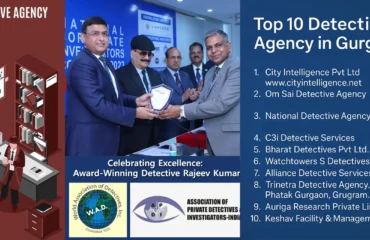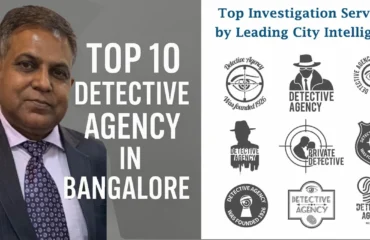The study of body language can help decode people’s nonverbal behavior and offers a very useful tool when interrogating a suspect in a crime. Body gestures and positioning, facial expressions, vocal tones, and several other signs are excellent indicators of people’s internal states.

Facial expressions and body movements can convey messages we don’t say verbally and spill volumes of information. Experts believe that body language can account for between 60 to 65 percent of all communication.
Here is a summary of some of the findings from well-established experts in the field.
Facial Expressions
Dr. Paul Eckman, a psychologist is considered to be a legend in the field of deciphering facial expressions. Dr. Eckman has developed a coding system for people’s emotional displays involving hundreds of facial muscles.
Some of the highlights of his work are as follows:
- Surprise- The following facial expressions indicate surprise as per Dr. Eckman:
- Raised and curved eyebrows
- Open jaw without stretching of the mouth
- Relative dominance of the white of the eye
- Horizontal wrinkles across the forehead
- Fear- Fear is displayed by the below facial expressions:
- Brows raised together
- Raised upper eyelids with tense lower lids
- Anger- A number of expressions can suggest anger or fury
- Lowering and drawing together of brows
- Dilated nostrils
- Tension in the lower eyelids
- Wide eyes
- Sadness- You can know if a person is feeling sad from the below mentioned facial expressions.
- Inner eyebrows contracted and raised
- Lower lip pouting
- Raised jaw
- Disgust- Disgust is displayed by
- Raising of upper eyelids, cheeks, and lower lips
- Scrunched nose
Here are a few other facial expressions and the emotions they convey as per some other experts in the same field:
- Nostril flare indicates anger
- Grin shows happiness and contentment
- Anger, high emotion, and frustration are displayed by lip compression
- Lip pout can indicate a variety of emotions ranging from sadness, submission, and uncertainty to seduction
- A frown may mean anger, sadness or concentration
- Raised brows show intensity, curiosity, or slight surprise
- Big pupils may suggest any of the following: arousal, fight, or drugs
- Small pupils show rest-and-digest
- Direct gaze may mean affiliation, threat, or deception
- Gaze-down indicates submission, deception or distraction
Body Language
Joe Navarro, an expert on body language, believes that contrary to the popular belief, gestures such as avoiding eye contact, touching one’s face or clearing one’s throat—do not actually indicate deception.
Navarro suggests that compressed lips and averting one’s eyes are signs that something is bothering someone. People also typically touch their necks when they have something bothering them.
He also points out some cultural nuances in non-verbal cues, such as nose-scrunching as a sign of a bad smell. While the Americans or the Japanese display only a mild scrunch, people living around the Mediterranean or Caribbean may crinkle their faces to bigger dimensions.
There are also displays that mean completely different things across groups of people. For example, giving a thumbs up is an indication of agreement across most countries; however, the same gesture is unacceptable in Egypt.
People tend to behave very differently when they are comfortable in an environment. When people feel relaxed, their gestures and body language tend to open up. Touch, head tilts, and smile are common indicators that the person is relaxed and comfortable. Experts like Navarro also believe that conflicts can be diffused using nonverbal cues such as body positioning. For instance, to help conciliate an angry person, he suggests standing sideways or side-by-side.
Here are a few examples of body language cues as suggested by Navarro:
- Shrugging of the shoulders is a universal sign of confusion
- Pointed finger with a closed hand suggests dominance
- Voice fluctuations typically indicate interest. Women, in such cases, often raise their voices while most men lower them
- Open palms signify honesty
- Eye contact shows interest- it may be either positive or negative
- Open, expansive body positions indicate dominance, power, leadership, or achievement
- Shaking legs excessively can be a sign of irritation or anxiety
- Displaying our front can mean we favor something
- Crossing of legs, especially in business negotiations, is considered to be an unfavorable sign indicating resistance or low receptivity
- Pointing a foot away from a partner in conversation may suggest a desire to exit
While the above non-verbal cues are based on extensive research, one must not forget that these are general signs and indications of what people are thinking, and it is important to consider specific context as well.
A shy person, for instance, may display signs of discomfort that can be mistaken for negative emotions such as disgust or anger. It is also crucial to establish trust or rapport with a person before trying to detect deception.
One should always remember that facial expression and body language are very complex and subtle forms of communication. They can be easily manipulated. Only experts, with years of experience behind them, are accomplished in interpreting these non-verbal cues correctly. A layman or a novice with interest in the field should not attempt to draw conclusions merely by reading books on the subject.
Fie, fie upon her!
There’s language in her eye, her cheek, her lip,
Nay, her foot speaks; her wanton spirits look out
At every joint and motive of her body.
– William Shakespeare

Rajeev Kumar – CEO, City Intelligence Pvt Ltd
Rajeev Kumar running a leading private detective agency in Delhi with over 24+ years of experience in private and corporate investigations. As a certified member of APDI and WAD, he has successfully solved 4,700+ complex cases across India. His expertise in undercover operations, corporate fraud detection, and advanced surveillance techniques makes him one of the most trusted detective experts in India.
Media Coverage:
Mid-Day Feature
Startup Story Feature
India Saga News
YouTube Interviews:
Exclusive Interview on Investigations
Case Study & Success Stories
Connect with Rajeev Kumar:
LinkedIn
City Intelligence Official Website

